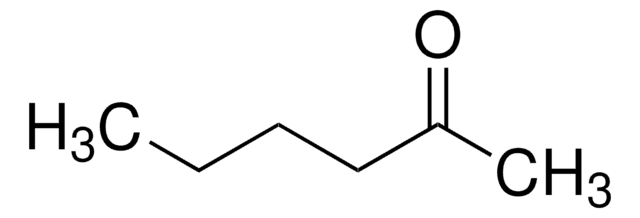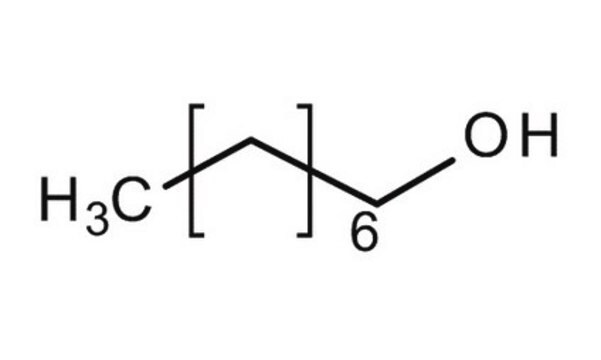おすすめの製品
グレード
analytical standard
品質水準
アッセイ
≥99.5% (GC)
シェルフライフ
limited shelf life, expiry date on the label
テクニック
HPLC: suitable
gas chromatography (GC): suitable
屈折率
n20/D 1.416 (lit.)
n20/D 1.416
bp
173 °C (lit.)
mp
−16 °C (lit.)
密度
0.819 g/mL at 25 °C (lit.)
アプリケーション
cleaning products
cosmetics
environmental
flavors and fragrances
food and beverages
personal care
フォーマット
neat
SMILES記法
CCCCCCC(C)=O
InChI
1S/C8H16O/c1-3-4-5-6-7-8(2)9/h3-7H2,1-2H3
InChI Key
ZPVFWPFBNIEHGJ-UHFFFAOYSA-N
類似した製品をお探しですか? 訪問 製品比較ガイド
詳細
アプリケーション
おすすめ製品
シグナルワード
Warning
危険有害性情報
危険有害性の分類
Acute Tox. 4 Dermal - Flam. Liq. 3
保管分類コード
3 - Flammable liquids
WGK
WGK 1
引火点(°F)
132.8 °F - closed cup
引火点(℃)
56 °C - closed cup
個人用保護具 (PPE)
Eyeshields, Faceshields, Gloves, type ABEK (EN14387) respirator filter
適用法令
試験研究用途を考慮した関連法令を主に挙げております。化学物質以外については、一部の情報のみ提供しています。 製品を安全かつ合法的に使用することは、使用者の義務です。最新情報により修正される場合があります。WEBの反映には時間を要することがあるため、適宜SDSをご参照ください。
消防法
第4類:引火性液体
第二石油類
危険等級III
非水溶性液体
労働安全衛生法名称等を表示すべき危険物及び有害物
名称等を表示すべき危険物及び有害物
労働安全衛生法名称等を通知すべき危険物及び有害物
名称等を通知すべき危険物及び有害物
この製品を見ている人はこちらもチェック
ライフサイエンス、有機合成、材料科学、クロマトグラフィー、分析など、あらゆる分野の研究に経験のあるメンバーがおります。.
製品に関するお問い合わせはこちら(テクニカルサービス)













